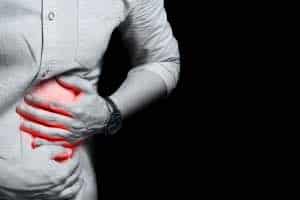
Joes story
Part I – Walking while living with disease
Joe, 44 years old, has been living with tests and markers for tumours showing them to be inoperable for pancreatic CA19 cancer for more than four years. All the innumerable Pancreatic blood test difficulties created for him by this complex cancer pathology did not preclude him from the project of crossing Italy and Europe on foot. His motto: Good Life to All!
How did you find out you had it?
On October 17, 2013, a friend pointed out the yellow colour of my eyes. That same night, I developed severe abdominal pain. At 3 a.m., I decided to go to the emergency room of Pordenone Hospital.
It was October 17, 2013, late afternoon. I was smoking a cigarette from my second pack, chatting with a friend. Suddenly, he said, “You know Spi, you have yellow eyes.” At that moment, I didn’t think much of it and replied, “Maybe tomorrow I’ll stop by the Pancreatic Cancer doctor for a CA19 tumour marker blood test. It might be fatigue or something.” I finished the chat and my cigarette. That night, the pain became excruciating, which scared me. My worried wife suggested going to the emergency room, but I hesitated. I thought the pain would pass. It didn’t pass. At 3 a.m., I took the car and drove to the emergency room. The Castaway Civil Hospital is about fifteen kilometres from my house. I parked right outside; there were plenty of parking spaces.
I rang the emergency bell and entered the green code. After acceptance and the usual medical history, I had the blood exam prescribed by my doctor. After an hour, I received a pain reliever, possibly morphine. The doctor then said, “We need to admit Joe urgently.”
What was the diagnosis?
I stayed in the hospital for 10 days, undergoing various exams. They performed an ultrasound endoscopy, a cholangial MRI, and a CT scan of my abdomen. By the end, they diagnosed me with adenocarcinoma in the head of the pancreas.
I sent a message to my wife, trying to keep her calm: “My Ca19 Pancreatic blood level values are a bit off, so they’re admitting me for more cancer tests. Before you start work, could you come by and bring me toothpaste and a toothbrush? Thanks. Kisses.”
They gave me a bed in an emergency room, and next to me, an older man was resting. I undressed and relaxed. And I remember stupidly taking a selfie to immortalise the moment, me in a hospital bed, never in 40 years. I remained hospitalised in the emergency room in the short-term internal CA19 medicine department and underwent many blood tumour marker and profile tests. They turned me over and over like a sock, but what struck me most about my first hospitalisation was the kindness, the sometimes whispered words of the nurses, the nurses and the doctor, a strange kindness. “How lucky,” I thought.
Transfer to the Surgery Department
After a couple of days, they informed me that I would be discharged from the emergency room because they had found me a place in another department; I was taken to the second floor of Pavilion A in the Surgery 1 department, where they assigned me a room.
The code had become urgent. This time, there were no other patients, a room at the end of the corridor with a personal bathroom and this time, I thought, “Wow, what an ass”. My stay in this department lasted about ten days, during which, in addition to always being turned and turned like the famous sock, I had many exams, including an ultrasound endoscopy, a magnetic resonance cholangial and a CT scan of the abdomen.
I perceived that I was unwell, or rather that there was something wrong with me, as the days went by and not because I saw more attention towards me from the nursing staff, but because I realised that I was taking too many Pancreatic blood exams, one behind the something else and to see a different expression on the faces of the doctors who passed by on their rounds that went beyond the classic questions, “How are you feeling?” Pain? Is it sleeping?”.
Seeking Answers and Emotional Response
They were trying to arouse in me a question that could be answered immediately. They wanted to tell me something but needed to figure it out. There was a lot of confusion in my head. And I thought I wasn’t sleeping. I was researching on the Internet. I had my wife bring me all the technological aids I had on purpose: an iPad, laptop, modem and a small television. In all this nonsense, I was looking for help. I was looking for answers. I had found them but didn’t want to know they were true; I was afraid.
One morning at the end of October, suddenly, I was moved from my room. I remember well: I went to the bathroom and found my stuff on the bed when I returned to my suite. And I wasn’t wrong when, in the corridor, I glimpsed a nurse who moved my bedside table to another room with my stuff, books, and newspapers.
I got angry, raised my voice, and had a little spat. It was not his fault. I was the one who was nervous more than usual, but then I went to my new bed, to my new room, this time with another patient. «End of fun,» I thought. My roommate had to be operated on for a breathing problem. It was nothing serious, but I immediately felt relieved. Maybe then I, too, wasn’t so serious.
Who knows why I had associated a more advanced stage of illness with staying in a single room? Although I appreciated it for my greater freedom, it had also begun to worry me.
